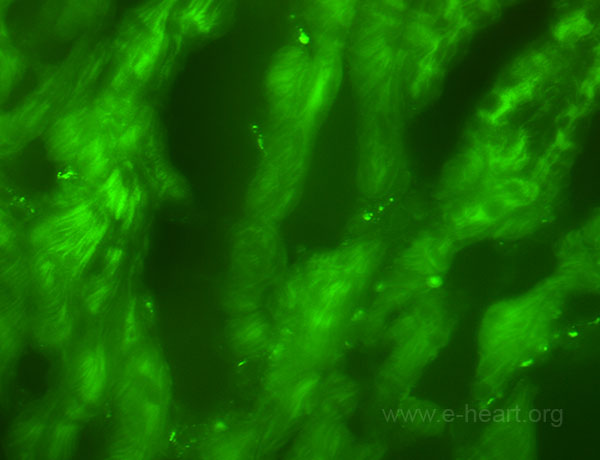Antibody Mediated Rejection (AMR) - II
The activation of the complement system results in injury to the cells through the formation of a membrane attack complex (MAC) which is the last event in the cascade of complement activation. The formation of MAC can be prevented by a series of proteins known as the regulators of complement activation (RCA's). These proteins are either soluble or membrane bound. The soluble proteins are shown in blue letters in the figure below. The membrane bound proteins are shown in black. DAF = decay acceleration factor or CD55. CR1 = Complement receptor 1 or CD35, MCP = major cofactor protein or CD46, CD59 = protectin.

A correlation has been identified between the expression of RCA's in the capillary endothelial cells and the activation of complement without dysfunction of the allograft. The presence granular deposits of DAF (CD55) in endomyocardial biopsies correleates the absence of cardiac dysfunction in patients.
Decay accelerating factor (CD55) is demonstrated as granular pattern of fluorescence in the capillaries of this immunofluorescence micrograph. The presence of CD55 is interpreted as the mechanism preventing progression of activation of the complement cascade from activation of C4 into activation of C3, and consequently no activation of the membrane attack complex.
Another example of deposits of DAF (CD55) in heart biopsies is shown here.

